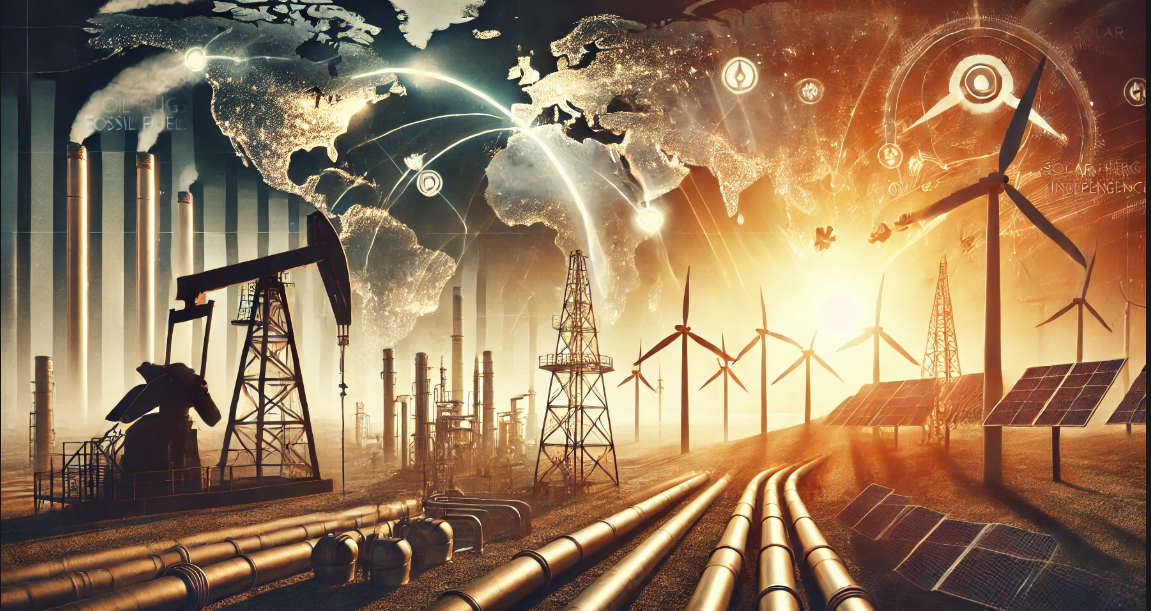World trade in environmental goods
Analysis and opportunities for EU companies offered by the expansion of the green economy
Published by Luca Surace. .
Export Foreign markets Data visualization Foreign market analysis
Almost twenty years have passed since the
WTO Ministerial Conference held in Doha
in November 2001, in which, in addition to sanctioning China's entry into the World Trade Organization, a principle of
fundamental importance was introduced for the first time, which will not be emphasized enough in the following years: the ministers
present undertook to open negotiations for the elimination of tariffs and non-tariff barriers for the so-called “Enviromental Goods and Services”.
These are goods and services that contribute positively to sustainable growth and environmentally friendly development.
This article analyzes the concept of enviromental goods in the context of international trade, reviewing the phases of WTO negotiation.
World trade in these goods will subsequently be analyzed, with particular reference to the analysis of the markets with the greatest potential
for EU companies. Beyond the possible agreement, in fact, in the last decade this sector has shown excellent performances in terms of growth.
Furthermore, the high technological level of products in question should represent an additional factor of attractiveness for European companies.
History and definition
The short description given above appears immediately ambiguous: the main obstacle for the realization of the agreement was (and still is) in fact the lack of a universally accepted definition, from which to obtain a precise list of goods and services on which to try to reach an agreement. Focusing on goods and then, reasoning in terms of the Harmonized System1, two product lists were adopted as a starting point for discussions:
- the one promoted by APEC (Asia-Pacific Economic Cooperation), which was the first organization to identify in 1997 the category "Enviromental Goods" as part of a project of voluntary commercial liberalization;
- the one promoted by OECD for illustrative and analytical purposes.
Both derive from a joint OECD-EUROSTAT work drafted in 1995 aimed at establishing guidelines for national statistical institutes in measuring
green industry. In this work environmental goods and services industry was defined as “activities which produce goods and services to measure,
prevent, limit, minimise or correct environmental damage to water, air and soil, as well as problems related to waste, noise and eco-systems.
This includes cleaner technologies, products and services that reduce environmental risk and minimise pollution and resource use.”
In the context of multilateral proposals, in which a country or group of countries proposed products considered as green, in 2009 an informal
list of 153 customs codes was agreed. Nonetheless, due to the deepening of the Great Recession, the negotiations subsequently experienced
a stalemate, regaining strength only in 2014 thanks to the impulse of the APEC countries. In 2012, the latter reached an agreement to reduce
applied tariff rates to 5% or less by the end of 2015, proposing in the WTO context the extension of the agreement also to non-APEC
countries. Therefore, since July 2014, 46 countries (including Australia, Canada, China, the United States and the EU countries) are engaged
in the negotiation of the so called Enviromental Goods Agreement2.
World trade
Considering the products underlying the APEC agreement3
and electric vehicles, today the world trade in environmental goods is worth about € 540 billion
and has grown over the last twenty years by about +300% (+20% considering the last 5 years). Only 14%, about € 74 billion, concerns
intra-EU flows while outside the borders of the European Union the value of trade amounts to over € 324 billion.
By analyzing the
customs codes in detail, the treemap below can help to examine their relevance, composition and trend. Each rectangle represents a
category of environmental goods and its size is proportional to the value of world trade in 2018. By clicking on a category it is
possible to analyze the individual products that compose it. Finally, the color indicates the variation of world trade values in
the last 5 years.
World trade in Enviromental Goods
Source: exportplanning.com
As you can see from the graph above, the categories have very different weights: almost half of the total value of the products considered (about € 250 billion) belongs to the category Renewable energy plants. The other categories show smaller trade volumes:
- Environmental Monitoring, Analysis and Assessment Equipment, with around € 120 billion;
- Management of Solid and Hazardous Waste and Recycling Systems (€ 79 billion);
- Waste Water Management and Potable Water Treatment (€ 43 billion);
- Air Pollution Control (€ 34 billion);
- Environmentally Preferable Products (€ 11 billion);
- Natural Risk Management (€ 3.8 billion).
Considering the dynamics of the last 5 years, all the categories recorded very positive trends, with the exception of Natural Risk Management, which experienced a reduction of -22% in euro values. The growth of Environmentally Preferable Products stands out for its intensity: driven by the electric vehicles revolution (referred to in this article), it has grown over € 5 billion in the last 5 years, registering a 210% increase. At the level of individual products, however, the dynamics appear more varied, with many goods belonging, for example, to the categories "Renewable energy plants" and "Management of Solid and Hazardous Waste and Recycling Systems" that have experienced negative changes.
Main Markets
The interactive chart presented below shows the global trade in enviromental goods divided by market:
- each bubble represents a specific market;
- the size of each bubble is proportional to the value of imports in 2018;
- colors provide a measure of the variation in the last 5 years of the imports of each market.
Enviromental Goods Markets
Source: exportplanning.com
Move the mouse over the bubbles to analyze the markets, or change the view by clicking on the following buttons:
At first glance (by clicking on "ALL MARKETS"), some of the most important markets clearly emerge: about 30% of environmental
goods imports are concentrated in the United States and China which, with € 103 billion, is by far the main importer.
With values between € 30 and 15 billion, Germany, Hong Kong, Mexico, Japan and South Korea follow.
Turning to the "INTRA AND EXTRA UE" view, we immediately realize the great difference between the imports of EU countries
and those outside the EU: although they are growing strongly, EU imports of environmental goods amount to "just" € 125 billion,
which is less than the combined value of the US and China. Entering even more in detail, i.e. analyzing the markets by
geographical area ("MARKETS BY AREA"), the Asia and Oceania cluster appears to be the most significant. Besides the aforementioned
China, Hong Kong, Japan and South Korea, many other markets present important values of purchases from abroad, as well as excellent
growth dynamics: India, Singapore, Vietnam and Taiwan, above all, appear as the markets with the greatest potential.
In America, in addition to the United States, Canada and Mexico also have significant import values, while among the relevant
markets of non-EMU Europe, only Russia shows an unfavorable trend. On the other hand, the "Africa and the Middle East" situation
is very varied, showing strong growth markets
(Egypt, Nigeria, Iran, Israel, Morocco and Kuwait, among the main ones) and others with less favorable dynamics
(Saudi Arabia, United Arab Emirates, South Africa).
EU exporters
Despite the world leadership is firmly in the hands of China, with a total value of exports of € 75 billion, on the side of the exporting countries the competition appears definitely more balanced. The European Union exports a total of € 167 billion of which almost half, about € 74 billion, inside the borders of the European Single Market. As shown in the chart below, Germany is by far the first EU competitor (the second in the world), with an export value in 2018 of € 64 billion and a strong international vocation: about 60% of sales are destined for non-EU countries. In second and third position we find, with about € 15 billion, United Kingdom and Italy, which also achieve more than 60% of their foreign sales outside the EU. Lastly, even the sales of France and Netherlands exceeded € 10 billion.
EU exporters of Enviromental Goods
Source: exportplanning.com
Conclusions
Data show the strong vivacity of the enviromental goods market, mainly driven by both the Chinese and American market. The potential for EU companies, in a rapidly expanding sector like this, therefore, appears enormous, also in light of the WTO negotiations that aim to break down tariff and non-tariff barriers. Contrary to the cliché that sees a trade-off between sustainable development and business opportunities, the global trade in enviromental goods represents an important opportunity both for EU companies and for future generations.
1 The Harmonized System is the international standardized classification of customs tariffs, which classifies every single product through the use of a 6 digits code.
2 For more information, see the dedicated section of the WTO website.


